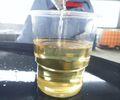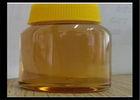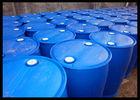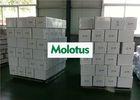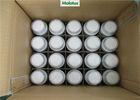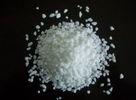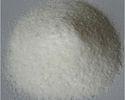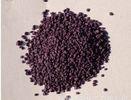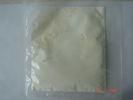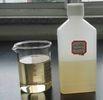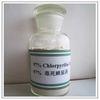High Pure Alpha Cypermethrin 95%Tc Insecticide Pesticide CAS 67375-30-8 - Alpha-cypermethrin 95%TC
High Pure Alpha Cypermethrin 95%Tc Insecticide Pesticide CAS 67375-30-8 For Sale, Most Competitive Price, Fast Delivery, Custom Service, Wholesale High Pure Alpha Cypermethrin 95%Tc Insecticide Pesticide CAS 67375-30-8, Made in China, High Quality Products!, China cheap prodocuts, china suppliers Supplier, Manufacturer.
High Pure Alpha Cypermethrin 95%Tc Insecticide Pesticide CAS 67375-30-8
?
?
PHYSICAL CHEMISTRY
Composition Tech. grade alpha-cypermethrin is >90% pure m/m, typically >95%. Mol. wt. 416.3 M.f. C22H19Cl2NO3 Form Colourless crystals; (tech. is a white to pale powder, with a weak aromatic odour). M.p. 81.5 oC (97.3 %) B.p. 200 oC/9.3 Pa V.p. 2.3 ′ 10-2 mPa (20 oC) KOW logP = 6.94 (pH 7) Henry 6.9 ′ 10-2 Pa m3 mol-1 (calc.) S.g./density 1.28 (22 oC) Solubility In water 0.67 (pH 4), 3.97 (pH 7), 4.54 (pH 9), 1.25 (double distilled water) (all in μg/l, 20 °C). In n-hexane 6.5, toluene 596, methanol 21.3, isopropanol 9.6, ethyl acetate 584, acetone:hexane >0.5 (all in g/l, 21 °C); miscible in dichloromethane and in acetone (>10?g/l). Stability Very stable in neutral and acidic media, hydrolysed in strongly alkaline media; DT50 (pH 4, 50 °C) stable over 10 d, (pH 7, 20 °C) 101 d, (pH 9, 20 °C) 7.3 d. Thermally stable up to 220 oC. Field data indicate that, in practice, it is stable to air. F.p. >80 oC (closed cup); not highly flammable
?
?
APPLICATIONS
Biochemistry Acts by preventing transmission of impulses along nerves, brought about by blocking the passage of sodium ions through sodium channels in nerve membranes thus preventing action potentials passing down axons. Typically this intoxication results in a rapid & quot;knockdown& quot; and resultant mortality. Mode of action Non-systemic insecticide with contact and stomach action. Acts on the central and peripheral nervous system in very low doses. Uses Control of a wide range of chewing and sucking insects (particularly Lepidoptera, Coleoptera, and Hemiptera) in fruit (including citrus), vegetables, vines, cereals, maize, beet, oilseed rape, potatoes, cotton, rice, soya beans, forestry, and other crops; applied at 10-15 g/ha. Control of cockroaches, mosquitoes, flies, and other insect pests in public health; and flies in animal houses. Also used as an animal ectoparasiticide.
?
?
ANALYSIS
Product analysis by glc with FID (CIPAC Handbook, 1998, H, 14). Residues determined by glc with ECD. (Validation determined with capillary gc with MSD). Soil, and body fluids and tissues determined by capillary gc with ECD; water determined by gc with ECD; air determined by capillary gc with NPD. Details available from BASF. Analysis of pyrethroids reviewed by E. Papadopoulou-Mourkidou in Comp. Analyt. Profiles.
?
MAMMALIAN TOXICOLOGY
Reviews JECFA 47 (see part 2 of the Bibliography). See A. J. Gray & D. M. Soderlund, Chapt. 5 in & quot;Insecticides& quot;. Oral Acute oral LD50 for rats 57 mg/kg (in corn oil). Skin and eye Acute percutaneous LD50 for rats and rabbits >2000 mg tech./kg; minimal irritant to the eyes of rabbits. Inhalation LC50 (4 h, nose only) for rats >0.593 mg/l (maximum attainable concentration). NOEL NOAEL (1 y) for dogs >60 mg/kg diet (1.5 mg/kg b.w. daily). ADI 0.02 mg/kg b.w. (JECFA evaluation) [1996]; 0.015 mg/kg b.w. (BASF). Other Non-mutagenic. Toxic to CNS and peripheral motor nerves; neuro-behavioural changes reversible within 3 days following a single dose. Acute rat study NOAEL 4 mg/kg b.w. (in corn oil); 4 week oral rat study NOAEL 10 mg/kg b.w. daily (in DMSO). May cause paresthesia. Toxicity class WHO (a.i.) II; EPA (formulation) II
?
?
?
?
ECOTOXICOLOGY
Birds LD50 for Northern bobwhite >2025 mg/kg; LC50 for Northern bobwhite >5000 mg/kg food. Reproductive toxicity NOEC (20 weeks) forNorthern bobwhite 150 mg/kg of food. Fish LC50 (96 h) for rainbow trout 2.8 mg/l; due to rapid loss from water, no toxic effect to fish is observed under field conditions. NOEC from early life stage test (34 d) 0.03 mg/l. Daphnia EC50 (48 h) 0.1-0.3 mg/l. Algae EC50 (96 h) >100 mg/l. Other aquatic spp. NOEC (28 d) for Chironomus riparius larvae 0.024 mg/l. Mesocosm study (1999): EAC 0.015 mg/l. Bees Toxic to bees. LD50 (24 h) 0.059 mg/bee; LC50 (24 h) 0.033 mg/bee. No toxic effect under field conditions. Worms LD50 (14 d) for earthworms >100 mg/kg artificial soil. No effect on earthworm reproduction was observed at a treatment representing 300 g/ha. Other beneficial spp. For Typhlodromus pyri at 15 g/ha >85% mortality; for Pardosa sp. at 0.21 and 0.6 g/ha <30% mortality, at 1.5 g/ha 60% mortality, at 30 g/ha 100% mortality; for Poecilus cupreus at 1.2 and 30 g/ha 0% and 17% mortality; for Aleochara bilineata at 1.2 g/ha 21% mortality, harmless at £0.7 g/ha; LR50 for Orius 0.1 g/ha, for Aphidius rhopalosiphi 0.9 g/ha.
?
ENVIRONMENTAL FATE
EHC 142 (WHO, 1992) EHC 142 notes that, although highly toxic to fish, this is not realised under field conditions where rapid loss from water allows recovery of affected populations. Animals See cypermethrin. Clearance time 7.8 d. Level of residues in organisms after the 28 day depuration phase 8% of the maximum level. Soil/Environment Undergoes degradation in soil, DT50 c. 13 w in loamy soil. See also cypermethrin (q.v.).
Shanghai Molotus Chemical Co.,ltd
Address: Room 402 Shangfu Building No. 553 Maotai Road, Shanghai, Shanghai, China, 200000
Tel: 86-150-70596596
Molotus is devoted to pesticide production, pesticide research and development, relevant products and services, and in the same time provide global agricultural plant protection program, helping sustainable development of agriculture.
Molotus distributes products all over the world like Africa,



